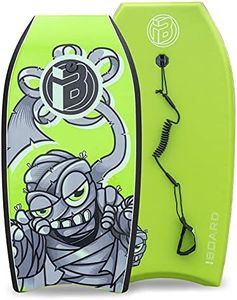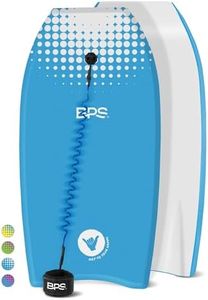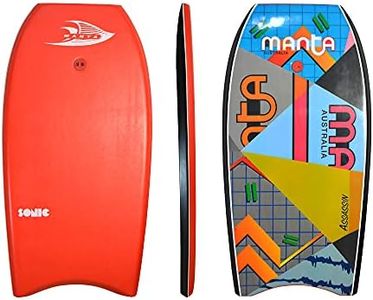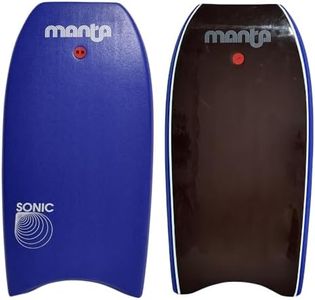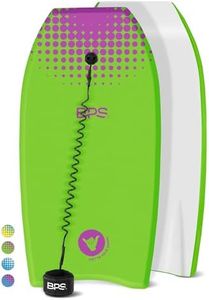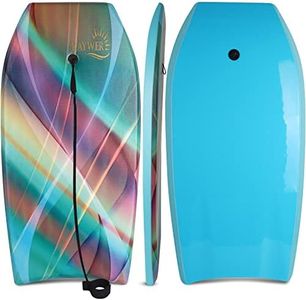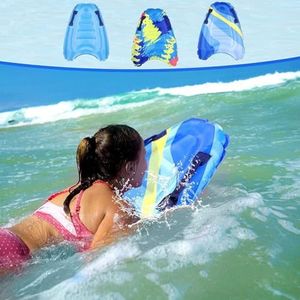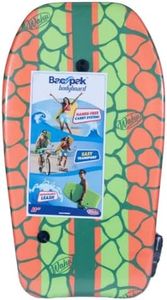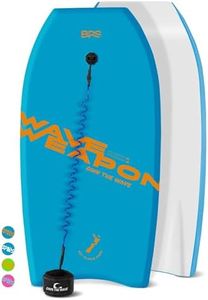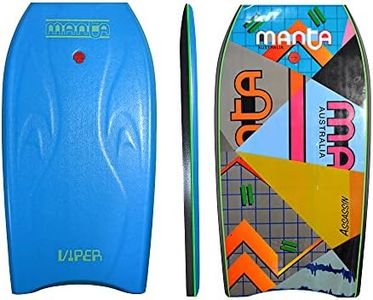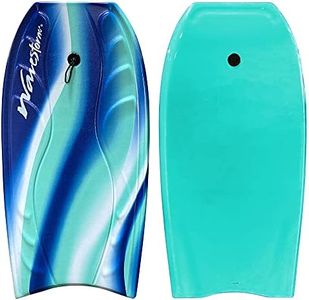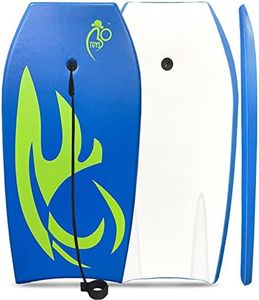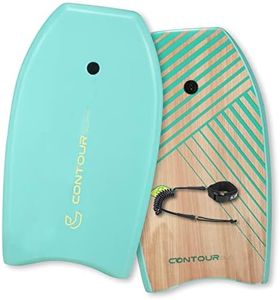We Use CookiesWe use cookies to enhance the security, performance,
functionality and for analytical and promotional activities. By continuing to browse this site you
are agreeing to our privacy policy
10 Best Boogie Board Bodyboards
From leading brands and best sellers available on the web.Buying Guide for the Best Boogie Board Bodyboards
Choosing the right boogie board, also known as a bodyboard, can make all the difference in your enjoyment and performance in the water. The best approach is to think about your own skill level, the typical wave conditions where you'll be using the board, and how you want to use it—whether for casual fun, learning, or progressing to more advanced maneuvers. Understanding the key features will help you match a board to your body type and style, making each session safer and more enjoyable.Board LengthBoard length is crucial because it should suit your height and weight for optimal performance and comfort. A bodyboard that's too short might not provide enough flotation or support, while one that's too long can be hard to maneuver. Beginners and casual riders generally choose a board that, when stood on end, reaches to about their belly button. Taller or heavier riders will need longer boards, while shorter or lighter users can opt for shorter ones. To pick the right length, consider your own body size—the board should be just long enough for your torso to rest securely, without overhanging.
Core MaterialThe core is the inside material of the board that impacts stiffness, durability, and performance. The two main types are polyethylene (PE) and polypropylene (PP). PE cores are softer and more flexible, ideal for cooler water temperatures and for beginners or those looking for comfort and easier handling. PP cores are stiffer, lighter, and suit warm water, offering better speed and responsiveness for intermediate or advanced riders. Consider the water temperature where you'll mostly be using the board, as well as your skill level, when choosing the core material.
Tail ShapeThe tail shape of a bodyboard affects how it moves and turns in the water. The most common types are crescent tails and bat tails. Crescent tails offer more control and stability, making them great for all-around use and beginners. Bat tails provide more lift and looseness for sharper turns and tricks, which can benefit more experienced riders. Decide what type of riding you prefer—control and comfort for straight rides or agility and tricks for more dynamic use—and let that guide your choice.
Deck Material and TextureThe deck is the top surface of the board where you lie, and its material and texture impact grip and comfort. Most decks are made from a soft, smooth foam that allows for some grip. Some boards add a textured or grooved finish for extra traction. If you anticipate needing extra grip (for rougher or more technical riding), look for a textured deck. For lounging and general use, a smooth deck can be comfortable and easy to manage.
RailsRails are the edges of the bodyboard and their shape affects both control and speed. Boards with thinner rails offer better bite and control in the wave, which is helpful for turning and staying on the wave face, while thicker rails provide more speed but less maneuverability. Beginners might appreciate the stability of more rounded, thicker rails, while advanced riders may seek thinner rails for sharper turns. Think about whether you want to focus on speed and straight rides or turning and control.
Bottom Contours and ChannelsThe bottom of the board may have contours or channels that guide water flow, improving speed and tracking. Simple, flat bottoms are ideal for beginners, but as you progress, channels can help with grip and maneuvering on steeper waves. If you're just starting out, a flat or lightly channeled bottom will get you going, but if you're looking to advance, consider more pronounced channels for added performance.
Leash and AccessoriesA leash is an essential safety feature that attaches you to your board, preventing it from drifting away in the surf. Leashes are often included or can be added to your board—look for comfortable and durable ones that attach securely to your wrist or bicep, depending on preference. If you'll be in bigger waves, a stronger leash is beneficial, while smaller waves allow for simpler setups. Choosing the right leash comes down to comfort and the typical conditions you'll be riding in.
